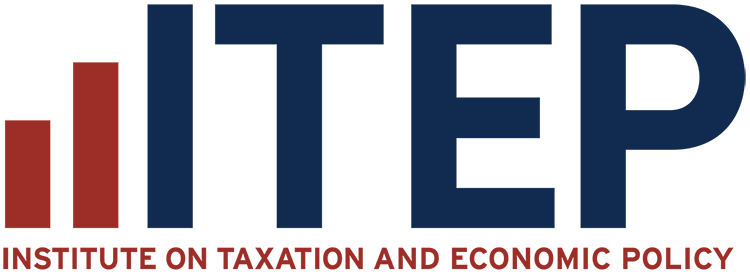State and local tax codes have the potential to either narrow or widen racial inequality created by historical and current injustices in public policy and in broader society.
In general, tax codes that are more progressive across the economic spectrum do more to narrow racial inequality, while regressive tax policies exacerbate it.
While information about taxpayers’ racial identities is not collected on tax forms, tax policy is far from race neutral. Different kinds of tax laws can have very different impacts – either intentional or unintentional – on people of different races and ethnicities.
Many provisions in state tax codes were originally written by segregationist policymakers who believed in keeping Black people poor. Slavery, Jim Crow laws, anti-immigrant discrimination, violence against tribal nations, and bigotry in housing, education, and other areas have helped create an economy in which white people, on average, have higher levels of income and wealth than people of color. The resulting economic disparities are sometimes called the racial wealth gap.
Because in every state Black and Hispanic households historically have been less wealthy than white households, policies that tax poor people at a higher rate than wealthy people – that is, regressive taxes – run the risk of widening the racial wealth gap. So any policymaker wanting to slow the economic progress of Black and Hispanic households was able to do so via regressive tax policies. Alabama, for example, relies much more heavily on sales and excise taxes than on property taxes; the reason is a property tax cap enacted in the late 19th century at the behest of wealthy white landowners who opposed investments in better schools for Black children.
Many of those policies still exist.
Some examples of racially inequitable policies that contributed to today’s racial wealth gap and that are still on the books include:
- Heavy use of sales taxes. States and localities rely heavily on sales and excise taxes that are not based on ability to pay, but rather on spending. Low- and middle-income households, disproportionately households of color, must spend a larger share of what they earn to make ends meet. Higher-income households, which are predominately white, can set aside much of their income as savings. In other words, sales taxes tend to ask the least of white families building large amounts of wealth while asking more of those of all races who are struggling to make ends meet and unable to set aside significant savings.
- Inequitable property tax structures. Black and Hispanic households are more likely to rent than to own their homes, so they benefit less than their wealthier white neighbors from property tax deductions and exemptions. Additionally, assessment practices tend to overestimate the value of Black and Hispanic-owned homes relative to market value, resulting in higher tax bills for people of color compared to white homeowners living in similarly valued homes – a clear violation of principles of both vertical equity and horizontal equity. Tax and expenditure limits in states like Alabama and California also undermine public services and shift tax reliance onto more regressive sources.
- Privileging wealth over work. Some state tax systems include special carveouts for income derived from wealth – such as investment returns and business profits – that are not available to people who depend on a wage or salary to make ends meet. As a result of the racial wealth gap, people of color are less likely to own substantial investments or to have access to the capital needed to start a successful business, and thus these preferences for wealthy people tend to worsen the racial divide.
- Fees and fines. To fund public services, some states and localities rely heavily on user fees, traffic fines, charges on criminal justice defendants, and other mechanisms that disproportionately affect poorer communities. In Ferguson, Missouri, for example, a U.S. Department of Justice investigation into the 2014 police shooting of Michael Brown identified the city’s overreliance on municipal fines and fees as a contributing factor. This overreliance had led the city to turn its police department into a de facto revenue-raising agency that targeted the city’s Black community, with tragic consequences.
Inequitably raised revenue can also lead to inequitable budget allocations. For example, most funding for public schools comes from property taxes. Areas with higher property values, which tend to have higher shares of white residents, generally have more funding per student, which can give some white students an early boost but disadvantage many children of color. Some states have even carved up multiracial school districts into poorer, mostly Black districts and richer, mostly white districts with the goal of corralling resources and perpetuating de facto racial segregation.
The damage from these policies extends beyond communities of color. Upside-down tax codes not only worsen racial wealth divides, they also make low- and middle-income households of all races and ethnicities worse off, protecting only the wealthy few.
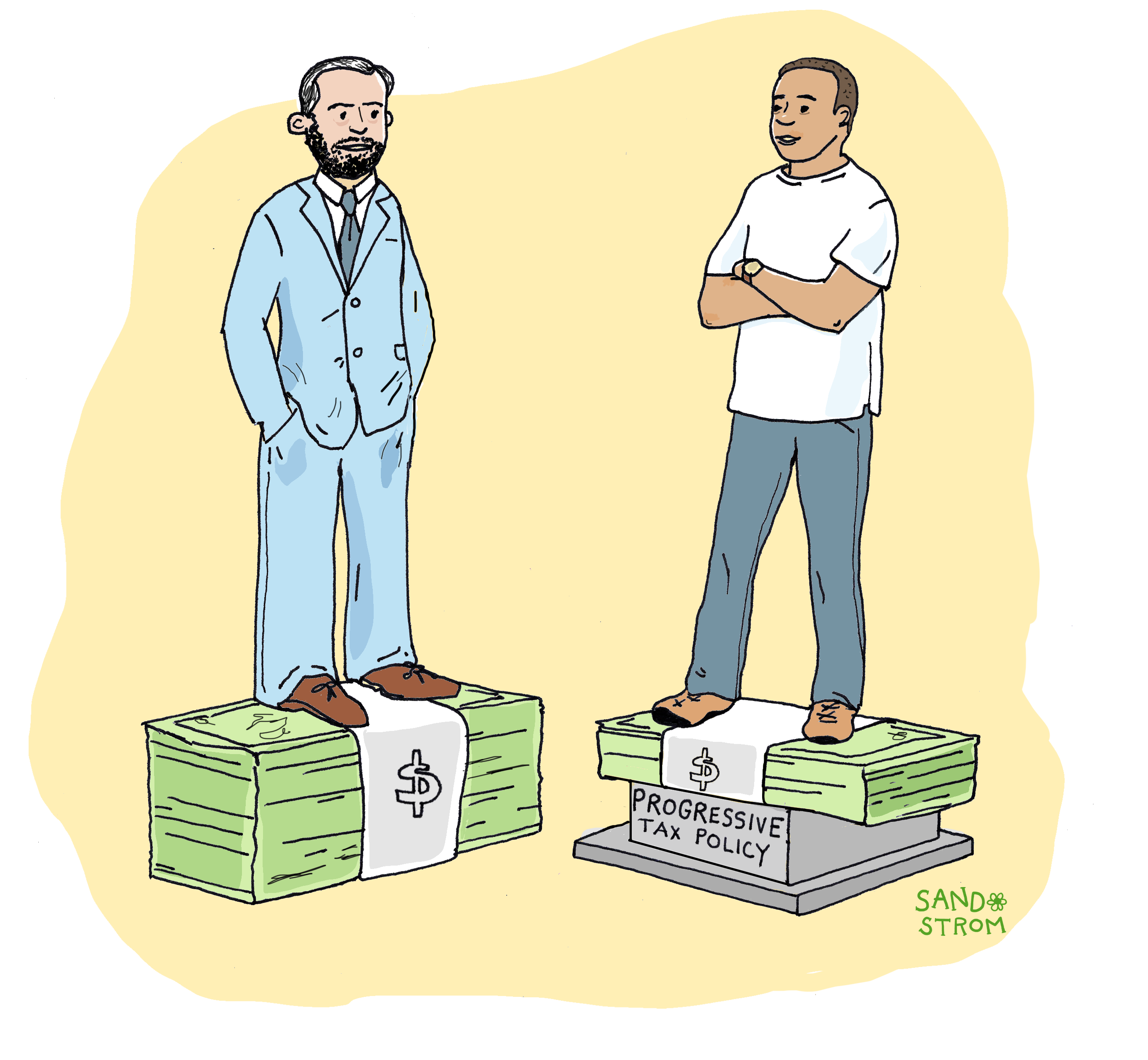
Some states are reversing course. They are enacting policies that undo the legacies of racism in their tax codes, advance racial justice, and expand progressive elements in their tax systems that reduce the racial wealth gap. They are doing this by:
- Analyzing their tax systems to identify and then remove biases in assessment practices, audit rates, and other areas that harm communities of color;
- Recognizing how the tax code maintains racial wealth gaps and ensuring the wealthy pay their fair share by strengthening personal income taxes on high earners, taxing wealth and inheritance to reduce generational wealth gaps, and eliminating tax breaks that primarily benefit the wealthy;
- Improving the financial standing of low-income families by enacting and expanding refundable Earned Income Tax Credits, Child Tax Credits, and property tax relief mechanisms for low- and middle-income renters and homeowners, which have been proven to be particularly important to improving outcomes for children of color;
- Reducing reliance on regressive revenue sources like sales taxes, fines, and user fees that affect Black and brown families disproportionately; and
- Creating adequate, sustainable revenue systems to fund schools, roads, and other public investments that promote broadly shared prosperity, providing a particularly important resource for communities of color.
Related Entries
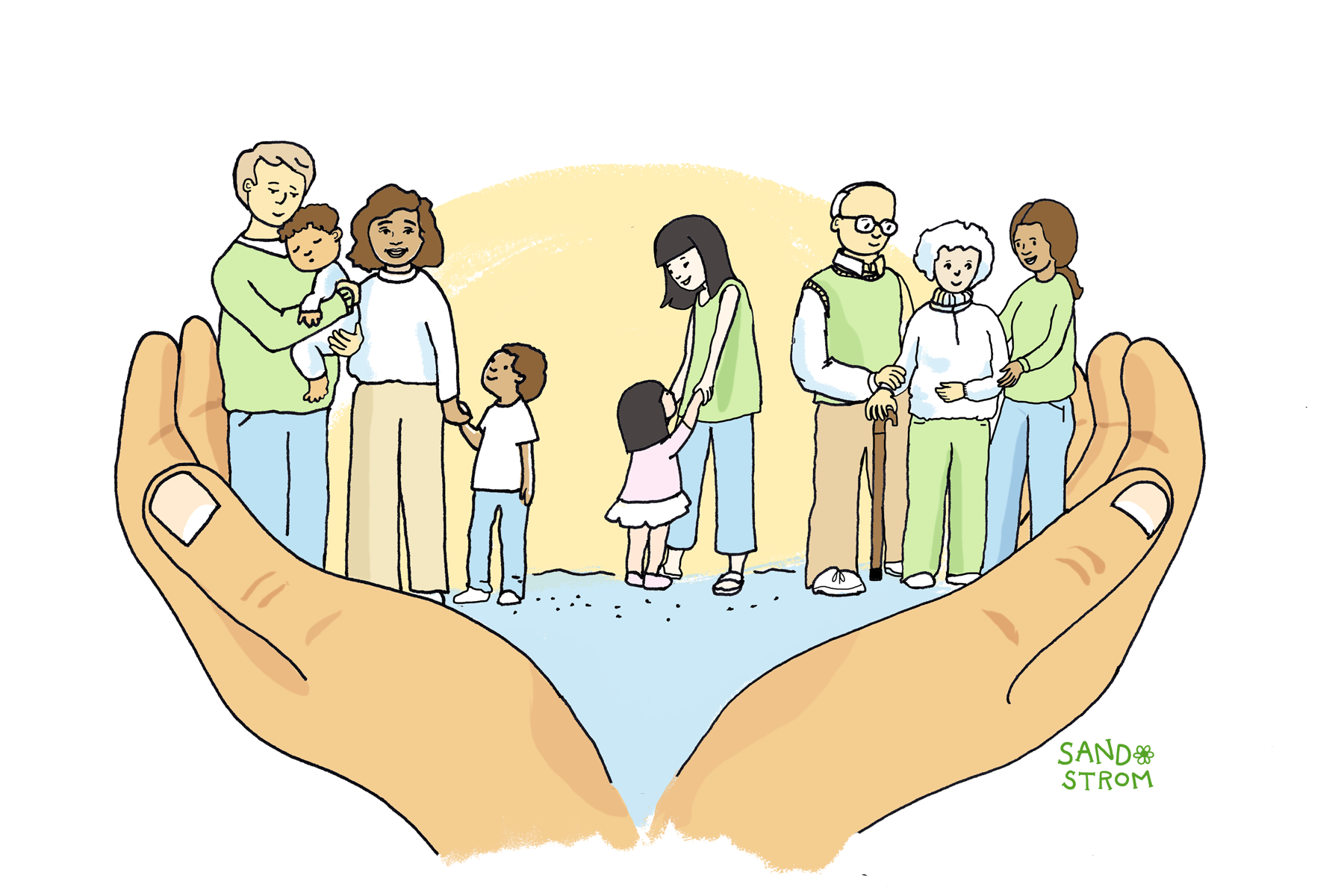
How Do State Tax Credits for Workers and Families Work?
State-level Earned Income Tax Credits (EITCs) and Child Tax Credits (CTCs) help workers and families make ends meet by reducing their taxes and providing refunds. Research shows these credits are very effective at reducing poverty and creating more equitable tax systems.
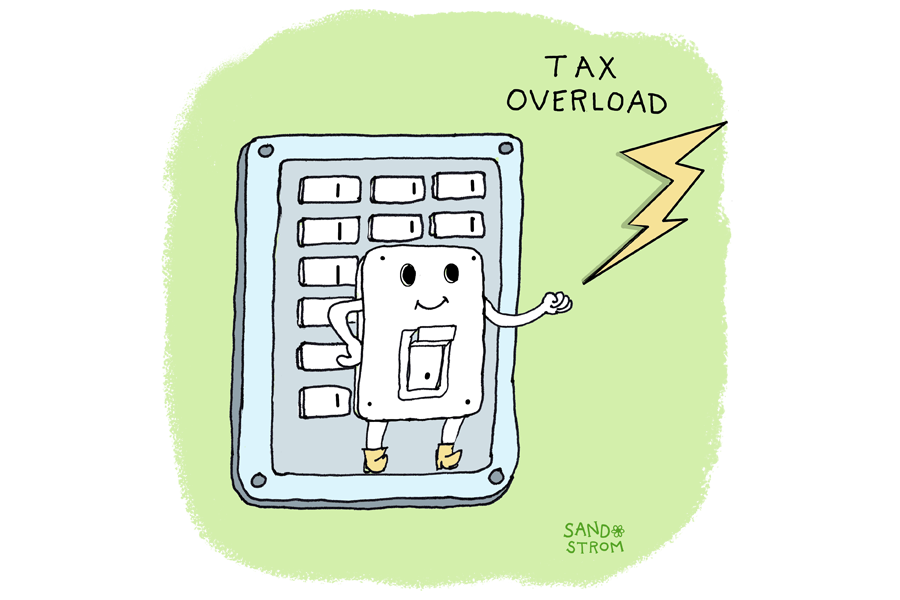
How Can Cities and States Reduce Property Taxes for Homeowners and Renters?
To reduce the cost of property taxes for homeowners and renters, many places offer homestead exemptions, circuit breakers, and deferrals. Such provisions are more cost-effective alternatives to broad tax cuts or tax limitations.
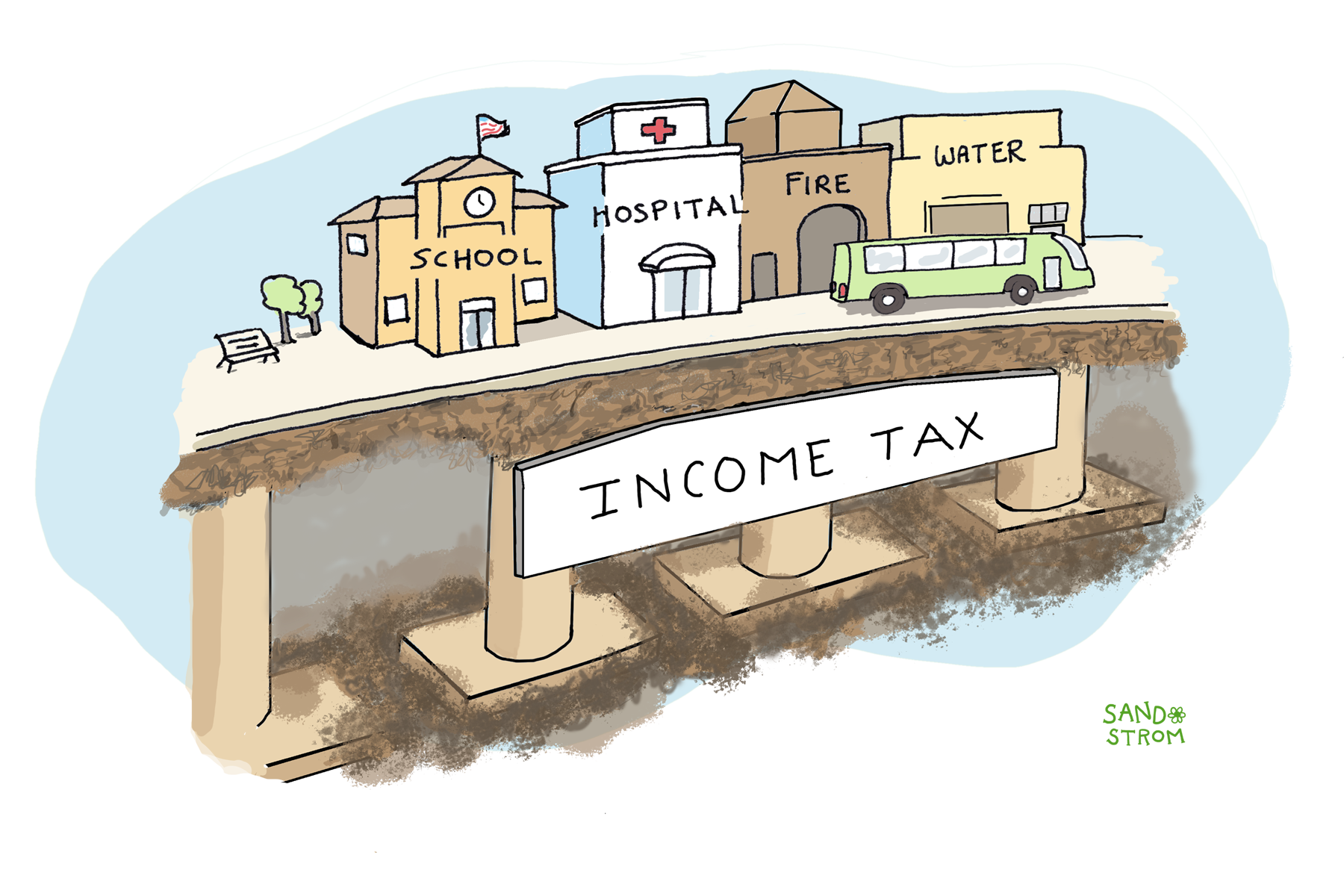
How Do State and Local Personal Income Taxes Work?
The personal income tax funds public education, health care, public safety and other public services provided by state and local governments. If well-designed, it is the fairest major revenue source available to states.
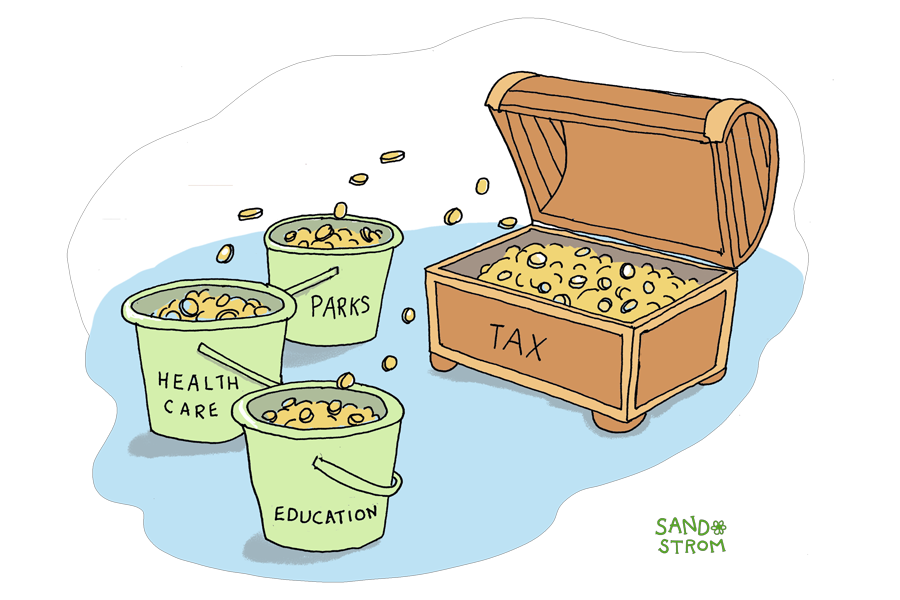
How Do State Estate and Inheritance Taxes Work?
Estate and inheritance taxes are taxes on large amounts of wealth passed on after someone’s death. They are a common way for states to tax the inheritances of wealthy individuals. These taxes help to curb the intense concentration of wealth across generations and fund broadly available public services like schools, hospitals, and parks.
Learn More
- Avenancio-León, Carlos, and Troup Howard (2022). “The Assessment Gap: Racial Inequalities in Property Taxation.” The Quarterly Journal of Economics, Volume 137, Issue 3, August 2022.
- Boddupalli, Aravind, Susan Nembhard, Michael Karpman, and Sarah Morriss (2024). How Fines and Fees Impact Family Well-Being.
- Davis, Carl and Brakeyshia Samms (2025). “Tax Policy to Reduce Racial Retirement Wealth Inequality.” In Reducing Retirement Inequality: Building Wealth and Old-Age Resilience. Oxford University Press.
- Davis, Carl, Misha Hill, and Meg Wiehe (2021). “Taxes and Racial Equity: An Overview of State and Local Policy Impacts.” ITEP.
- Davis, Carl, Marco Guzman, and Jessica Schieder (2021). “State Income Taxes and Racial Equity: Narrowing Racial Income and Wealth Gaps with State Personal Income Taxes.” ITEP.
- Derenoncourt, Ellora, Chi Hyun Kim, Moritz Kuhn, and Moritz Schularick (2024). “Wealth of Two Nations: The U.S. Racial Wealth Gap, 1860–2020.” The Quarterly Journal of Economics, Volume 139, Issue 2.
- ITEP (2024). Who Pays? A Distributional Analysis of the Tax Systems in All 50 States. Seventh Edition.
- Leachman, Michael, Michael Mitchell, Nicholas Johnson, and Erica Williams (2018). “Advancing Racial Equity with State Tax Policy.” Center on Budget and Policy Priorities.
